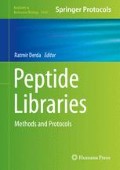Abstract
Premature birth is a steadily increasing unmet medical need, for which new “tocolytic” agents are required to arrest contractions and delay labor. A peptide-based approach was developed to produce modulators of the prostaglandin F2α receptor as a novel target for tocolytic development. In this strategy, the solution-phase synthesis and alkylation of aza-glycyl-proline building blocks were key for the preparation of a series of modulators exhibiting biased signaling. An optimized method is now provided for making the aza-Gly-Pro unit with minimum side product, and alkylation of the unit is described to illustrate the library diversification step. Conditions have been reported for selectively unmasking the protecting groups at the N- and C-terminal of the aza-dipeptide unit and for its introduction into analogs that modulate the signaling of the PGF2α receptor. The merits of this protocol for azapeptide synthesis have thus been demonstrated by the synthesis of inhibitors of myometrial contraction exhibiting potential as prototypes for developing tocolytics to treat preterm labor.
Access this chapter
Tax calculation will be finalised at checkout
Purchases are for personal use only
References
Blencowe H et al (2012) National, regional, and worldwide estimates of preterm birth rates in the year 2010 with time trends since 1990 for selected countries: a systematic analysis and implications. Lancet 379(9832):2162–2172
Chang HH et al (2013) Preventing preterm births: analysis of trends and potential reductions with interventions in 39 countries with very high human development index. Lancet 381(9862):223–234
Morken N-H (2012) Preterm birth: new data on a global health priority. Lancet 379(9832):2128–2130
McCormick MC, Richardson DK (2002) Premature infants grow up. N Engl J Med 346(3):197–198
Russell RB et al (2007) Cost of hospitalization for preterm and low birth weight infants in the United States. Pediatrics 120(1):E1–E9
Iams JD, Romero R, Culhane JF, Goldenberg RL (2008) Preterm birth 2 – primary, secondary, and tertiary interventions to reduce the morbidity and mortality of preterm birth. Lancet 371(9607):164–175
King JF, Flenady V, Papatsonis D, Dekker G, Carbonne B (2003) Calcium channel blockers for inhibiting preterm labour; a systematic review of the evidence and a protocol for administration of nifedipine. Aust N Z J Obstet Gynaecol 43(3):192–198
Papatsonis D, Flenady V, Cole S, Liley H (2005) Oxytocin receptor antagonists for inhibiting preterm labour. Cochrane Database Syst Rev 3, CD004452
Brodt-Eppley J, Myatt L (1999) Prostaglandin receptors in lower segment myometrium during gestation and labor. Obstet Gynecol 93(1):89–93
Drahl C (2011) From picture to pill: Debut of G-protein-coupled receptors will bolster drugmakers’ tool kits. Chem Eng News 89(11):15–21
Kenakin TP (2010) Ligand detection in the allosteric world. J Biomol Screen 15(2):119–130
Peri KG et al (2002) THG113: a novel selective FP antagonist that delays preterm labor. Semin Perinatol 26(6):389–397
Peri K, Polyak F, Lubell W, Thouin E, Chemtob S (2005) Peptides and peptidomimetics useful for inhibiting the activity of prostaglandin F2alpha receptor PCT/CA2003/000903
Bourguet CB et al (2011) Targeting the prostaglandin F2 alpha receptor for preventing preterm labor with azapeptide tocolytics. J Med Chem 54(17):6085–6097
Goupil E et al (2010) A novel biased allosteric compound inhibitor of parturition selectively impedes the prostaglandin F2 alpha-mediated Rho/ROCK signaling pathway. J Biol Chem 285(33):25624–25636, In English
Proulx C, et al. (2011) Azapeptides and their therapeutic potential: current issues and new possibilities. Future Med Chem: 1139–1164
Andre F et al (1997) Azapepties. 2. X-ray structures of aza-alanine and aza-asparagine-containing peptides. J Pept Res 49(6):556–562
Lee HJ et al (2000) Role of azaamino acid residue in beta-turn formation and stability in designed peptide. J Pept Res 56(1):35–46
Thormann M, Hofmann HJ (1999) Conformational properties of azapeptides. J Mol Struct (Theochem) 469(1–3):63–76
Boeglin D et al (2007) Calcitonin gene-related peptide analogues with aza and indolizidinone amino acid residues reveal conformational requirements for antagonist activity at the human calcitonin gene-related peptide 1 receptor. J Med Chem 50(6):1401–1408
Bourguet CB, Sabatino D, Lubell WD (2008) Benzophenone semicarbazone protection strategy for synthesis of aza-glycine containing azapepties. Biopolymers 90(6):824–831
Bourguet CB, Proulx C, Klocek S, Sabatino D, Lubell WD (2010) Solution-phase submonomer diversification of aza-dipeptide building blocks and their application in azapeptie and aza-DKP synthesis. J Pept Sci 16(6):284–296
Still CW, Kahn M, Mitra A (1978) Rapid chromatographic technique for preparative separations with moderate resolution. J Org Chem 43(14):2923–2925
Sabatino D et al (2009) Exploring side-chain diversity by submonomer solid-phase azapeptide synthesis. Org Lett 11(16):3650–3653
Proulx C et al (2012) Azapeptide analogues of the growth hormone releasing peptide 6 as cluster of differentiation 36 receptor ligands with reduced affinity for the growth hormone secretagogue receptor 1a. J Med Chem 55(14):6502–6511
Sabatino D, Proulx C, Pohankova P, Ong H, Lubell WD (2011) Structure-activity relationships of GHRP-6 azapeptide ligands of the CD36 scavenger receptor by solid-phase submonomer azapeptide synthesis. J Am Chem Soc 133(32):12493–12506
Boeglin D et al (2006) Aza-scanning of the potent melanocortin receptor agonist Ac-His-D-Phe-Arg-Trp-NH2. Chem Biol Drug Des 67(4):275–283
Acknowledgments
The authors would like to thank the Natural Sciences and Engineering Research Council of Canada (NSERC), the Fonds Québécois de la Recherche sur la Nature et les Technologies (FQRNT), the Canadian Institutes of Health Research (CIP-79848), the March of Dimes, and the Canadian Foundation for Innovation for financial support. We thank Dr. Alexandra Fürtös of the Université de Montréal Mass Spectrometry facility for mass spectral analyses and Ms. Sylvie Bilodeau and Mr. Cedric Malveau of the Regional High-Field NMR Laboratory for aid with NMR spectroscopy.
Author information
Authors and Affiliations
Corresponding author
Editor information
Editors and Affiliations
Rights and permissions
Copyright information
© 2015 Springer Science+Business Media New York
About this protocol
Cite this protocol
Bourguet, C.B., Lubell, W.D. (2015). Synthesis and Alkylation of Aza-Gly-Pro Building Blocks of Peptidomimetic Libraries for Developing Prostaglandin F2α Receptor Modulators as Therapeutics to Inhibit Preterm Labor. In: Derda, R. (eds) Peptide Libraries. Methods in Molecular Biology, vol 1248. Humana Press, New York, NY. https://doi.org/10.1007/978-1-4939-2020-4_6
Download citation
DOI: https://doi.org/10.1007/978-1-4939-2020-4_6
Published:
Publisher Name: Humana Press, New York, NY
Print ISBN: 978-1-4939-2019-8
Online ISBN: 978-1-4939-2020-4
eBook Packages: Springer Protocols

